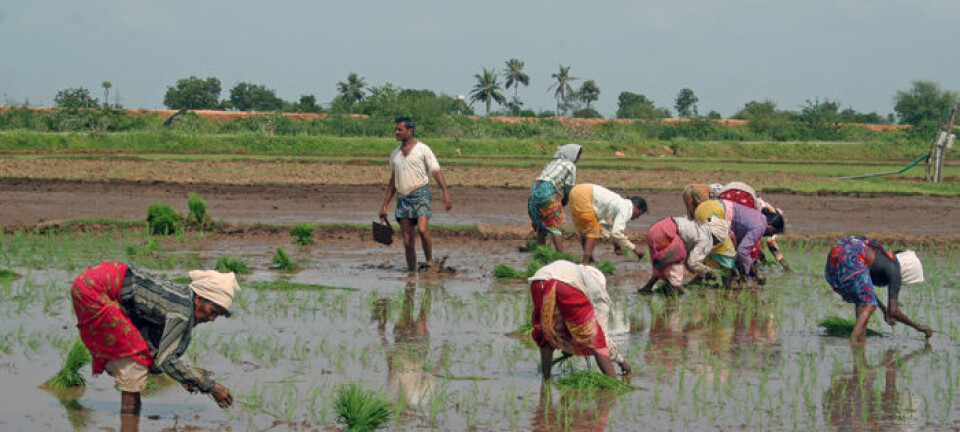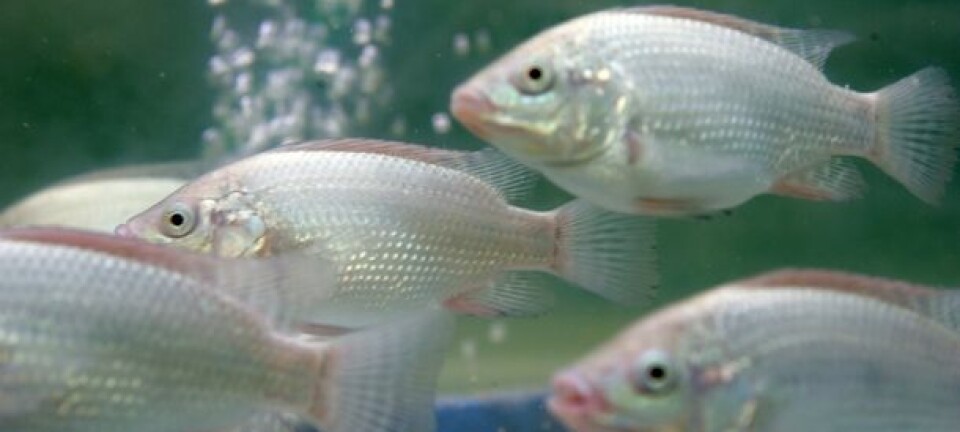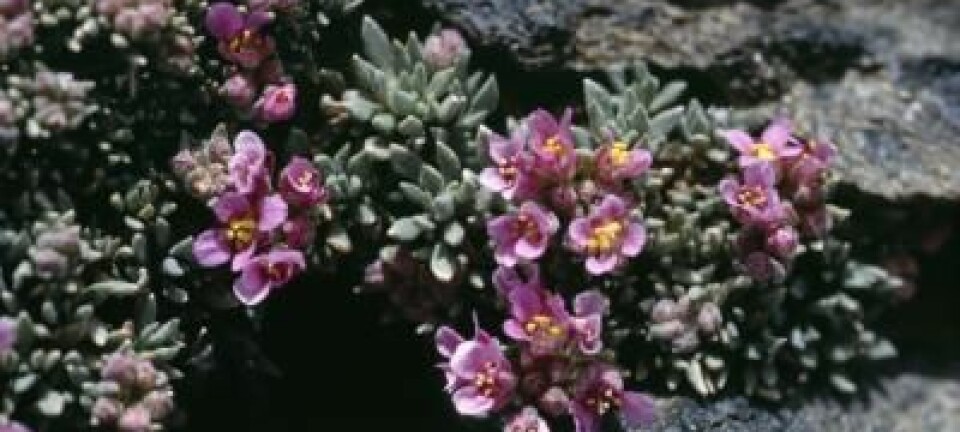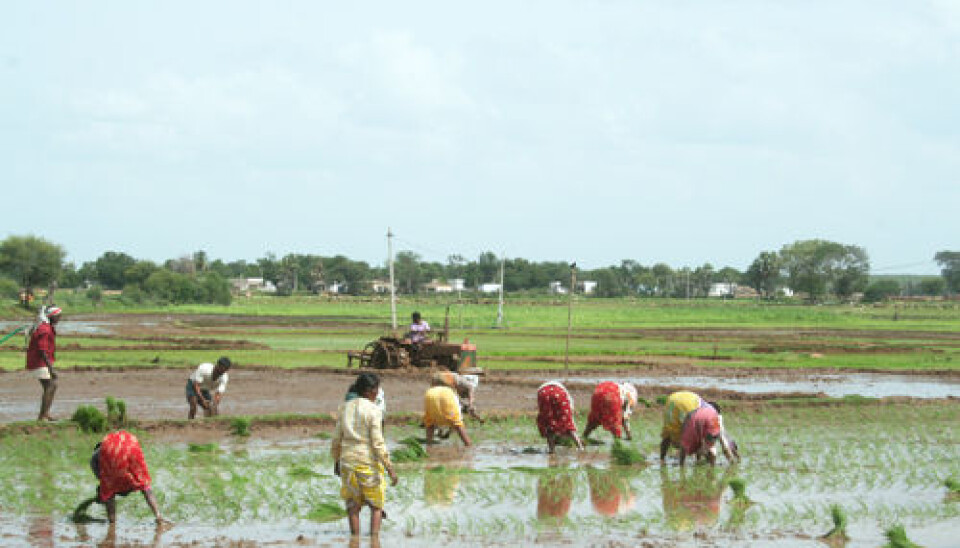
Adapting rice cultivation to climate changes
India’s millions of peasant farmers need to make their rice crops more robust in the face of the climate changes. A Norwegian-Indian project aims to increase crops also when little water is available.
Denne artikkelen er over ti år gammel og kan inneholde utdatert informasjon.
India produces nearly 100 million tonnes of rice annually and is the world’s second-largest producer, following China.
This requires great amounts of water. Most rice production in India depends on irrigated paddies.
A research project called ClimaRice, with Norway’s Bioforsk, the Norwegian Institute for Agricultural and Environmental Research, in a key role, can help vulnerable farmers increase their crops also when little water is available.
“Water availability is Indian agriculture’s biggest challenge,” says Kupanam Palanisami, a professor and researcher at the International Water Management Institute (IWMI).

IWMI, headquartered in the Sri Lankan capital Colombo − with several offices in Africa and Asia − is one of Bioforsk’s partners in the project.
Feeding the world
Rice is the world’s most important grain next to wheat and is crucial to global food security. Hundreds of millions of peasants in South and Southeast Asia make a living producing it.
Water is in short supply in many regions and it’s feared that man-made climate changes will trigger variations in precipitation that jeopardise rice production.
The project ClimaRice is comprised of multiple initiatives in the states of Andhra Pradesh and Tamil Nadu.
Less water use
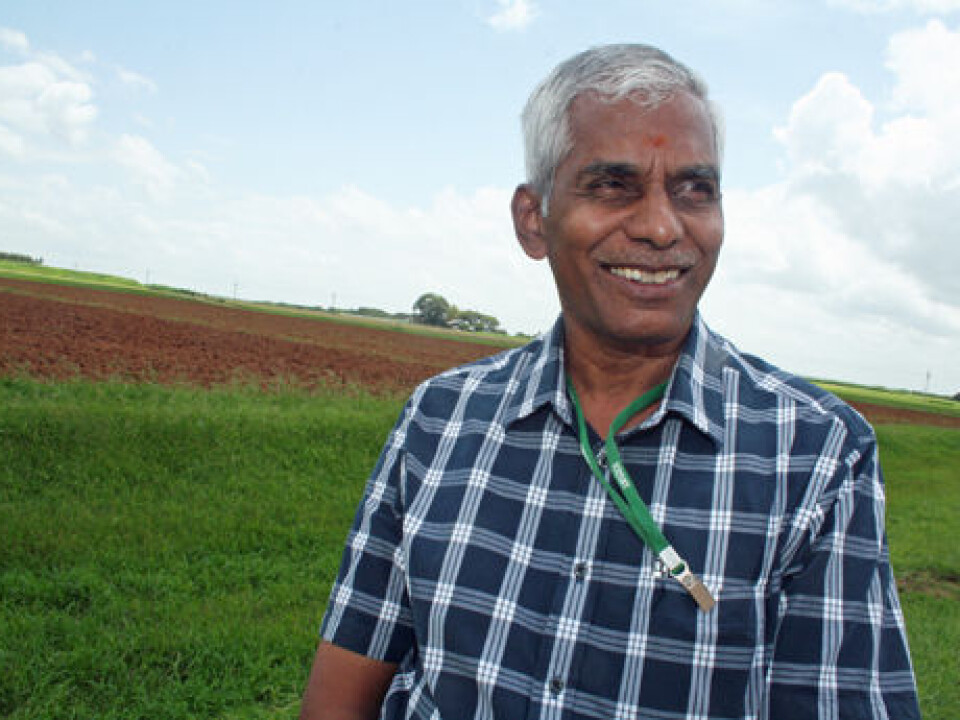
One promising result has been a less aquatic method of rice cultivation, in which the grain is sown directly into the soil.
The technique has been tried in two villages and in two seasons. Apart from requiring less water, it gave a better yield and reduced costs for the farmers.
“This method will be beneficial, especially in areas with uncertain water supplies,” says Palanisami, who is involved with IWMI’s Hyderabad office in Andhra Pradesh.
Climate changes can make for less predictable weather, also in India. Direct sowing in the soil is intended as just one of many ways of making agriculture more robust in a changing climate.
Canals
Palanisami says this particular method won’t be relevant for the vast majority of rice farmers but it can help many.
Extensive irrigation networks spread water to farmers who don’t have access to watering systems from wells and other sources.
Direct sowing is most relevant for fields furthest from the trunk canals and thus most susceptible to being left high and dry during shortages.
No need to replant
Rice farmers traditionally plant seed in a small portion of their field, which is flooded. When the seedlings reach a certain size they are replanted in a larger area where it grows until harvest.
With the alternative method, the rice is sown right where the plants will grow.
This method isn’t new and it’s been used in a number of Indian states in the past. It became less attractive when the government initiated canal construction and large-scale irrigation projects. But it is seeing a renaissance after water supplies started diminishing and rains appear less predictable.
Promising
“The results look promising and we wish to see them confirmed on a large scale in the new ClimaAdapt programme before we can recommend an escalation. Nevertheless, the farmers appear very optimistic,” says Nagothu Uday Sekhar, who manages the project on behalf of Norways’ Bioforsk.
He says the authorities have now started to recommend the method in their counselling service for farmers.
ClimaAdapt is a new Norwegian-Indian research collaboration costing €4.25m, which was inaugurated by Norwegian Minister of Agriculture Trygve Slagsvold Vedum on a recent visit to India.
Curbing climate emissions
Rice production causes significant discharges of the greenhouse gas methane. When paddies are flooded with water in subtropical and tropical regions, the conditions become nearly perfect in the soil for generating methane.
India, China and the rest of South and Southeast Asia produce most of the world’s rice and thus release a lot of methane into the atmosphere.
These methane discharges abate when less water is used to grow rice.
Reduced water consumption will of course also contribute to the Indian authorities’ water conservation goals.
Cost reductions
The method represents an added bonus in several ways.
The replanting of seedlings amounts to a third of the work effort in rice production. Farmers who hire help for this operation can cut their expenses considerably.
In the trials conducted in two villages, the sowing of rice directly in dry soil gave a 3-4 percent better yield than for rice planted traditionally.
The method can give rice plants a deeper root system, which makes the uptake of nutrients more efficient.
The combination of reduced expenses and increased income improved the economies of the farmers who used direct sowing.
One disadvantage with the alternative method is that weeds pose more of a problem, which requires more use of pesticides during the initial growth phase.
Combinations
The researchers don’t believe any single method can make agriculture more adaptable to a changing climate. It’s a question of interplay between research, advisory services, farmers and initiatives on several levels.
Other methods that have been tried involve the mounting use of machines for sowing and replanting seedlings, more exact levelling of rice paddies to reduce the amount of water needed to flood them and the cultivation of algae that can fix atmospheric nitrogen.
Others are looking into the opportunities for farmers to establish better insurance schemes to compensate for crop failures.
Models are also being worked out to enhance the calculation of water consumption and the prediction of future water needs.
--------------------------------------
Read the Norwegian version of this article at forskning.no
Translated by: Glenn Ostling







